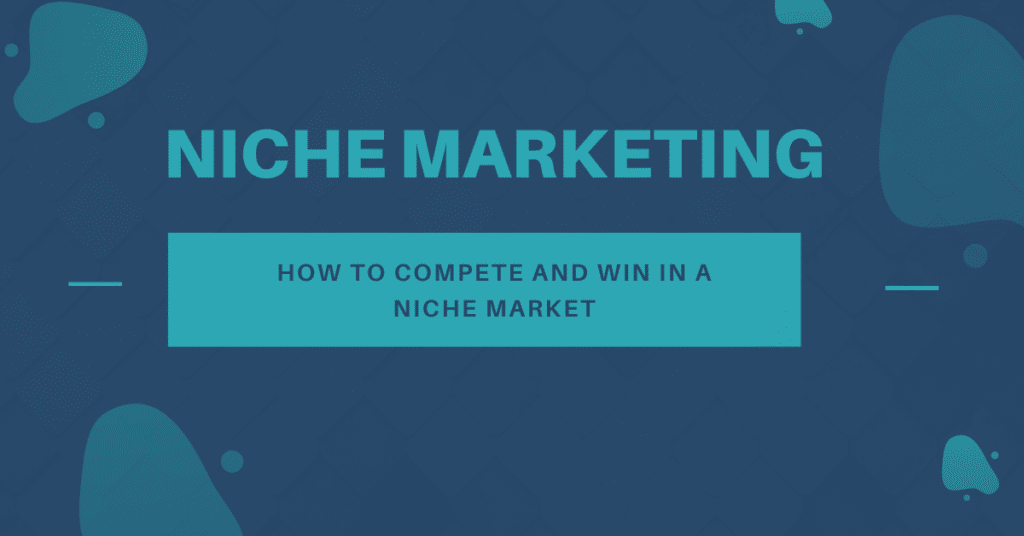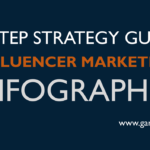If you are just starting out in business, it is important to consider the benefits of a niche market rather than trying to tackle a large market.
Think of the difference between a generalist and a specialist. You’re probably familiar with the saying ‘Jack of all trades and master of none’.
This simple expression sums up what often happens when people set up an online business. They want to go broad, rather than narrow.
Being broad means have to cater to all sorts of different customers. However, in a niche, you focus on only a few customer segments at most, and as a result, you know and understand their needs really well.
The advantage of a niche market is that the level of service, understanding and focus you give to customers in a niche can’t be matched by a large generalist company.
It’s not to say that a niche isn’t competitive. Often, they often are. But, you can compete in a small market better than taking on large companies in established markets and big budgets.
The exception to this is of course if you have a sustainable disruptive business model. Even then you will need a budget and a focused strategy to establish and grow your brand.
In the first instance let’s just what is a niche business?
Table of Contents
Definition of Niche Marketing
A definition of a niche market is based on market segmentation.
A niche market is a focused, targetable portion of a market.
By definition, a niche is focused on a narrow set of customers. Often these are termed as being underserved by larger companies.
Underserved simply means that larger companies can’t tailor to every type of customer segment. Large companies don’t tailor their products or services to just a few, they have broad offers. For this reason, they leave the market open to niche businesses who focus on their needs better.
What are the benefits of a Niche Market
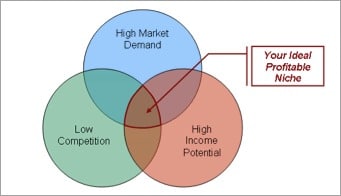
When you focus on a niche market you need to narrow and change your mindset to one of being a specialist.
I’ll explain this later in this article. But, with only a few customer segments to serve you have a wonderful opportunity to get to know your customers better than any other business.
However, you also want to make money. The balance then is finding a niche that has enough customers and enough market value to warrant you setting up a business.
Benefits of Niche Markets
What makes niche marketing appealing is that you provide products or services that are tailored to a group of potential customers needs.
Less Competition
Usually, there is less competition or less budget for competition overall in a niche market. However, as a niche market becomes more attractive and established more players may well join in looking to exploit the opportunities.
More Impact
Within a small market relationship and communications often evolve into communities. You will find communities either on social media sites, e.g. Facebook groups or as an example on Linkedin. The good news is that within a community it becomes easy to build your brand and develop brand awareness.
You Quickly Develop Expertise
Listening to niche communities, conversations on social media, doing research on topics related to a niche progressively leads to your becoming an expert. Over time as you use your knowledge to develop your marketing you can position yourself as an authority figure within the niche.
Expansion Opportunities
Once you’ve established your revenue and profit you can think about expansion and crossing into other niche areas. Lots of businesses grow this way.
How to identify a niche market
Unless you focus on a niche with a potentially high demand you’re unlikely to make money. What are the high demand markets?
It’s pretty obvious that we all want the same things. It comes down to looking at Maslow’s hierarchy of needs and translating these into what we know are the successful niche markets.
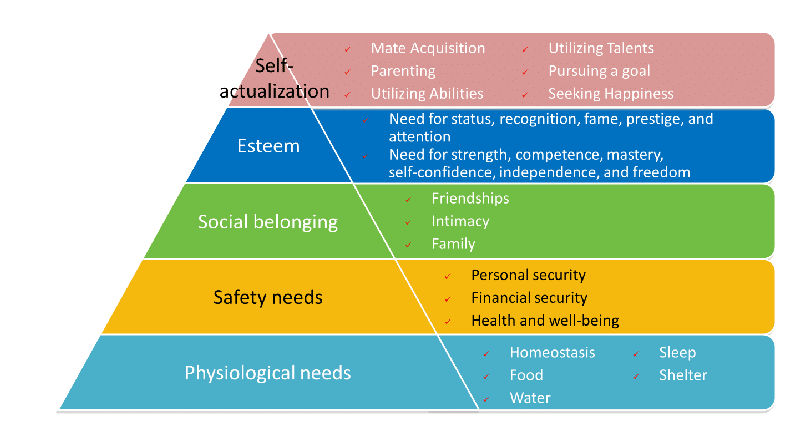
Five Big Markets To Niche Down On
- Health & Fitness
- Wealth / Money
- Relationships & Dating
- Self Improvement
- Hobbies, Interests & Activities
If we take health and fitness then we can drill into that and look at niche markets.
The Pilates & yoga market was valued at $87,926 million in 2017 and is projected to reach $215,811 million by 2025, growing at a CAGR of 11.7% from 2018 to 2025.
That’s a big market but how can you get an idea for a niche?
- Yoga for students
- Yoga for over fifties
- Yoga clothing for men
As an example, I search on Google trends for Yoga leggings.

The Yoga market prediction is for further growth, so you know you can invest in this market and it will not suddenly disappear.
How To Research Your Niche
Having found a few top-line reports and established Yoga as a possible niche, we can now look at the search terms and volumes to find out what people are looking for. Remember, you ideally want to look at searches with high purchase intent.
Niche Market Demographics
I found on this site, a list of demographics and more information we can use – note I’m doing this quickly and given a few days I could pull together a decent market analysis. But for this purpose I want to show you how to do the research.
To get this I typed into Google yoga demographics.
- About 36 million Americans practice yoga.
- The number of US “yogis” increased by over 50% in 4 years.
- 28% of Americans have tried practising yoga in their lives.
- It’s forecast that over 55 million people will practice yoga by 2020.
- 87% of people feel better after a yoga class.
- Americans annually spend $16 billion on yoga classes, equipment, clothing, and accessories.
- Women account for 72% of yoga practitioners.
- 14 million people doing yoga are over the age of 50.
Now we can head over and use a tool like Ahrefs to see search volumes and terms.
Google US Search Volumes
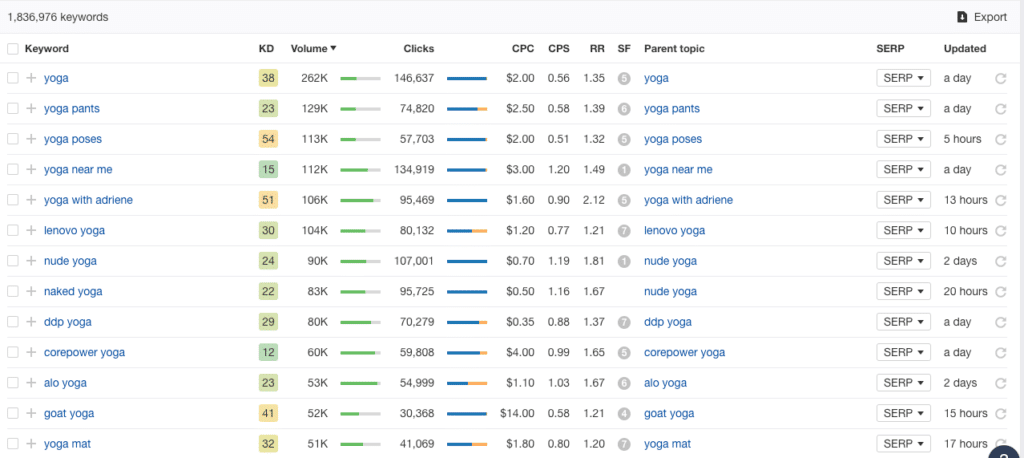
The next step is to do the same search for Amazon, YouTube and other main search engines.
Using Buzzsumo, you can also identify trending topics, the top influencers in a niche and so on.
Remember, influencers are potential partners that you can build a relationship with and who in turn will help you to grow your niche business.
Niche Marketing
What is Niche Marketing
Niche marketing focuses purely on your niche targeted customer. It doesn’t aim broad. Instead, it focuses exactly on the 1-3 segments that you serve.
If you have ever read the wonderful book by Bernadette Jiwa called Meaningful it calls on the idea of creating brands that people connect with, fall in love with.
A niche brand has the opportunity to deeply understand the pains and troubles of a set of customers and then reach out and help them.
Instead of casting a wide net niche marketing uses every aspect of its branding and marketing to demonstrate that it serves that niche and aims to deliver to its needs. Many businesses that dominate a niche go onto to do more. But this is how and where they start.
Why use a niche marketing approach?
Map the customer journey. Use questions and answers to build an idea of the different problems your niche customers are trying to solve.
By using your blog you can create content tailored to your niche market audience. The ability to use niche marketing communications helps to build a community around your brand.
You will gain a high level of traction with your niche marketing communications which means more social shares, more backlinks and more comments. But how you do develop a niche market? here are some points to help you.
Niche Marketing: 11 Steps To Grow Your Niche
Step 1. Understand the Gaps
The first step in any niche marketing is to identify the gaps. Instead of looking at other businesses and see what they are doing well, learn to recognise the gaps. Market gaps are essential to developing a niche market.
Let’s dispell one myth. There are no new niches and that is good. Ideally, you want a niche that someone else has already tested. You want to know before you invest loads of time that people actually do spend money on this niche.
Your goal is simply to grab a piece of that pie and earn money, establish yourself and grow. You can though be different. You will have your own approach, way of doing things and of course personality.
What you want though
There are some different ways to identify gaps:
- Customer surveys / Customers interviews – these help you determine what people want and what people feel they may be missing; they provide the insights into niche marketing. Surveys are easy to do, and there are some low-cost online survey tools, e.g. Survey Monkey.
- Customer behaviours – review how people buy and use products or services. Look for the high intent search terms like best, cheapest, compare, coupon, discount, free shipping…
- Focus on passions and problems. These are things people are more likely to spend money on. As an example, in health, a huge market is weightloss products. The passions of people – Harley Davidson don’t just sell motorbikes they sell a lifestyle and dreams. They also run events for people to meet up – they and other companies cater to the passions of people. Niche marketing provides the sub-markets after the sale of a Harley Davidson. As an example, merchandise, e.g. T-Shirts, Jackets; the events and meetups.
- Special needs. Gluten-free, products or nut-free products are gaining in popularity because they cater to a set of people who have special dietary needs.
- Consider the aftermarket many businesses are not very good at following up on customers needs, e.g. when you buy a petrol lawnmower, you might subsequently then need a lawn mower repair service.
I have access to loads of reports – if you have an urgent need for a report then simply go to the contact page and I will generate a quick report for you.
Step 2. Research the Opportunity
Once you have identified the gap, you need to quantify the opportunity. Is my niche marketing idea worth investment? And will I be able to get the revenue I need for my business? (volume of people buying).
Use online tools to see how many people are searching on the keywords for your specific niche – look at the number of searches and also the competition for AdWords.
Here are some useful tools:
- Google Trends
- Ahrefs (search volumes, questions and competitor sites analysis).
- Amazon – yes you can use Amazon to find out in a category what products are hot. Use a tool like Amasuites to identify loads more niche products. If you’re looking to become an Amazon affiliate this tool is the most powerful way to find the right products – volume, price and niche. It searches six of the most popular online shopping sites in the world: Amazon US, Amazon UK, eBay US, eBay UK, Target, and Walmart. You know then that the data it brings back is on what people are actually buying.
SEMrush . Another tool that can help you identify the keywords, volumes and questions that relate to your niche market.
Step 3. Create Your Marketing Persona.
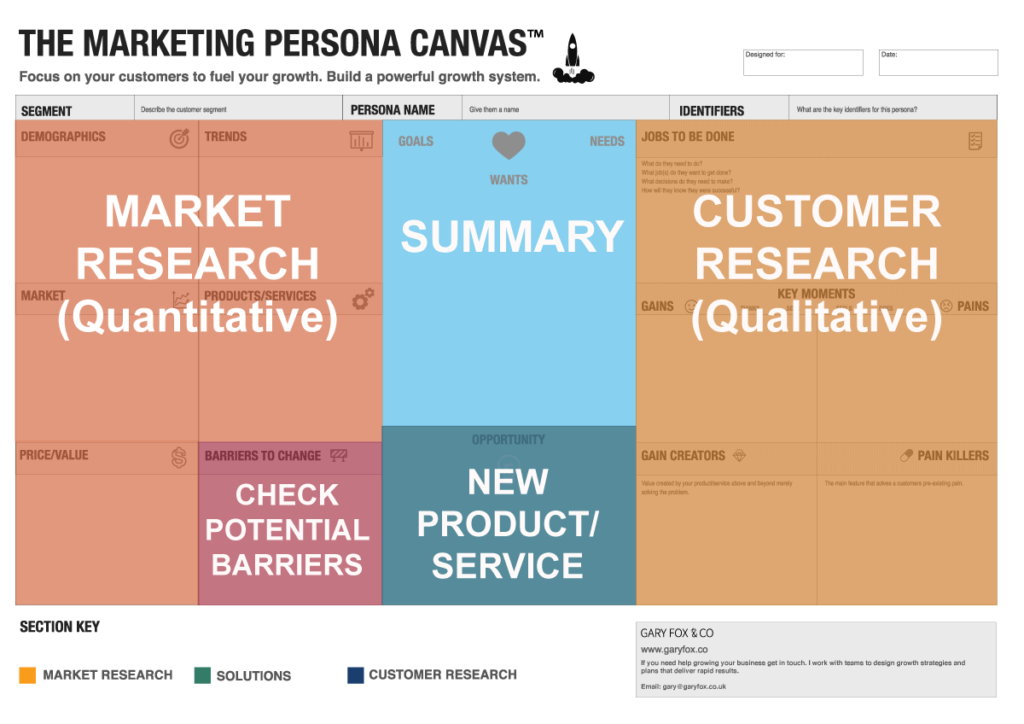
A marketing persona is a fictional character created to represent different customers types within a targeted demographic.
They provide a common way to talk about a customer and help guide your niche marketing decisions. A marketing persona is a version of customers and contains character traits, names and behaviours to help develop content marketing.
Why create a marketing persona?
You’re short on time. You want to get stuck into doing things that seem pointless.
A marketing persona is not pointless. There is a good reason top brands and entrepreneurs use them.
Get a free customer persona canvas and create yours.
They quickly help you focus on the pains of your ideal customer. I know people that stick their personas on the wall to remind them of their customer. Teams use them so that they have a common framework for planning marketing campaigns.
Personas guide marketing decisions. The key point about niche marketing is that by developing a marketing persona and matching this to your marketing niche you improve your content marketing and how you influence your customer (it will speak directly to their needs and their passions).
I’ve developed The Marketing Persona Canvas. A visual place to put all the information you find out about your niche in one place and use it to focus on your ideal customer. It’s free to download – so jump in and use it.
Step 4. Brand and Value Proposition
Once you have identified the niche(s) you need to get creative and think about how you can solve add value, solve problems and how you are going to position your offer in the market.
The key action is to think solutions that will meet the needs of the customers and then prioritise which are going to best for niche marketing.
Get a free value proposition canvas template.
Not sure about how to develop a value proposition! I suggest using the value proposition canvas. It’s simple to use and an easy way to hone in on what value you offer.
Build the brand so that your target niche will easily identify with it.
Understand the psychology of colours so that you create a brand identity that connects with your customers.
Not a designer? on a budget?
Then use tools like
Step 5. Content and Channels
Your brand is your platform for engaging with your potential customers.
Now you have an identity you need to know where and how to market to your customers. The first thing to do is to find out what channels and media they use.
Also, identify influencers.
I’ve already covered in another post the main influencer marketing platforms you can use to find and engage with influencers.
If your niche relates to photography, e.g. photography drones, then your video and images are going to be the main media to use and share. Social channels like Instagram and YouTube are an ideal way to communicate with your audience.
Places to find groups of potential customers:
Also, look for specialist communities and forums online.
Step 6. Develop a Content Strategy.
Before you start posting and developing content identify what content gets shared on your competitor sites.
If you use a tool like Ahrefs or Buzzsumo, you can enter your competitor’s site and see which content is shared the most. You can also filter on different social channels, e.g. YouTube, Twitter, Facebook.
Often you will find that content such as infographics get shared a lot. See my post on how to create a shareable infographic.
A few tips:
- Be realistic with your time and how much content you are able to produce.
- Use a calendar and schedule your content.
- Focus on volume keywords for cornerstone content.
- Cluster your lower volume keywords around your cornerstone content.
- Optimize your on-page SEO.
- Publish your content and promote it.
Step 7. Sales and Lead Generation
Even if you are selling services, you need to make it easy for people to understand what they get for their money and how it fits their needs.
Productising is the art of pulling together the key features and benefits for each product or service.
Many businesses now use tiered service offerings, e.g. web hosting services or freemium business models e.g. Wordpress.com, because they are easy to understand and provide opportunities for people to upsell their offers.
Plan your funnel from the beginning to the end. Placing too much emphasis on the beginning leaves you exposed to missing out on growing your email list and building your customer base.
Without sounding boring, your database of customers( email list) is the true value of your business, as well as the organic traffic.
I created the Marketing Growth Canvas to help you do this.
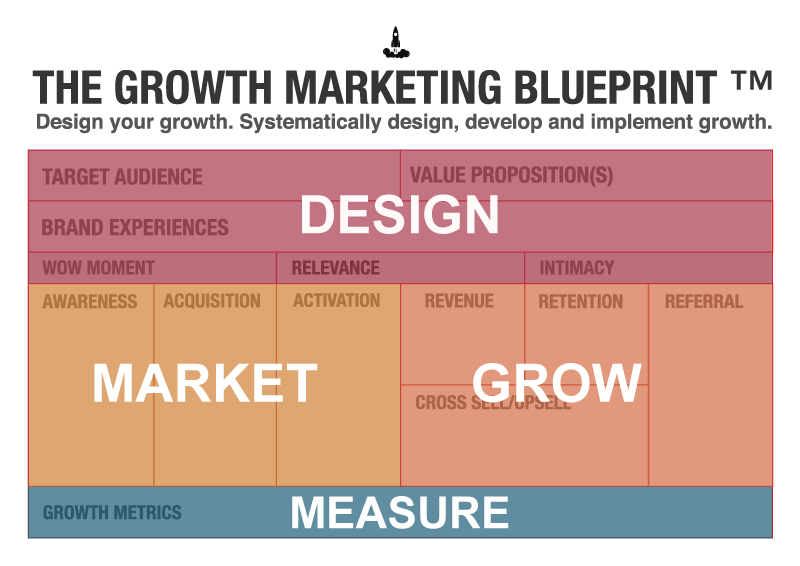
Here are some actions you need to optimize for capturing, converting and growing your business.
1. Awareness
A lot of potential customers in a market won’t know you exist. Alternatively, they may know you exist but don’t really know much about your products or services and how they could benefit from them.
- Use Social Media Ads or Google Ads to reach your customers.
- Create an influencer marketing campaign.
- Optimize your SEO so you appear in search results.
- Newsjack relevant trending news/topics.
- Answer questions on Quora.
- Participate in Linkedin groups.
- Optimize your Page Speed on both desktop and mobile (it is one factor that contributes to how Google ranks your site) – see best web hosting services.
2. Acquisition
Acquisition involves getting customers and potential customers to interact with your brand and then giving up their email address or mobile. This then enables you to start building the relationship and moving them through to activation.
- Use Email capture forms and email service, e.g.
GetResponse , on your website. - Optimize your Landing pages – see my list to choose a landing page builder and for recommendations the Landing Page Optimization Infographic.
- Use webinars for lead generation and conversions – see my list of the best webinar software.
- Lead magnet – produce a high-quality and valuable asset to give away in exchange for an email.
- Have clear conversion points across your website.
- Make it hyper-relevant by having different lead magnets for different sections/pages of your site.
3. Activation
Activation focuses on the first experience your customers have with your actual product or service. If you sell courses you may offer them the first few parts of a course so they can experience if it is right for them. On SaaS companies, you are probably familiar with the free trial offer or you get access to service but it has limitations in terms of functionality.
Some people ask if this can be translated into B2B companies or product companies.
How do you get your customers to try your product or service, commit to a phone sales call, tell you what they need… This is when a customer moves from being a passive email to actively enquiring, trying a product or downloading more detailed information. You are basically moving reducing friction to buy, building trust and in the case of B2B reducing objections, obstacles…
As an example, requests for free samples of products are still popular and of course events and brand activation experiences are other forms of inviting customers to ‘try’ the product or service.
4. Conversion (Revenue)
Trying is one thing, converting is another. Influencing a customer to move from free to pay is the moment of truth. Anyone can try a product or service but receiving payments is when a company has customers.
Conversion points are activated in a number of different ways. Most companies rely on discounting as a way to influence potential customers to buy. However, using other methods of adding value rather than discounting can be overall better for the brand. Often brands have unused assets that they can use to add value.
Landing pages for online conversions are the optimal way to convert customers. However, for Bt0B outbound sales calls can be far better especially if the potential customer has already been identified as having a high potential to convert.
- Discounted offers
- Cohorts
- Time-limited offers
- Bundle offers
- Landing pages
5. Retention
Churn rates vary across industries. The key to your business success is to get it as low as you can. How do you achieve that? There are two approaches to this.
First, profile customers that stay in and stick with you. Identify what makes them different. If you then improve your marketing to target these ‘type’ of customers you will immediately improve your churn rate.
Second, brainstorm what and how you can add value to your customers post-purchase. Many successful brands have done this through building communities, education programs and giving their customers new ways to discover others.
- Review if a community strategy can help you – trial it.
- Identify how customers connect and share content and talk – can you facilitate their conversations in a forum.
- Move to the physical world – can you hold events and meetups for customers, e.g. WordPress and Harley Davidson are two brands that have successfully done this.
6. Referral
Referrals are an often-ignored part of the marketing mix. Referrals are your ideal trigger to accelerate growth. Why?
First of all, new customers will be more likely to trust an existing customer than any of your ads. Also, the chances are that your customers will know on and refer to similar profiles to themselves. In other words, its highly targeted. Here are a few points to guide you.
- Ask for referrals at the right time.
- Immediately following a purchase.
- After a positive customer social engagement.
- After a high NPS rating or survey.
- When a customer responds to your NPS survey.
- Following a positive customer service experience.
- Make sure you are providing the right incentives
- Know your customer acquisition cost (CAC) and have a good sense of your customer lifetime value LTV (CLTV) before you begin.
- Consider different tiers of rewards in relation to your budget.
- Ask customers how they like the rewards.
- Make referring as easy as possible.
- Find ways to help your customers overcome reputational risk
- Make your site secure.
- Feature details about the referral campaign prominently.
- Keep it simple.
- Be good.
- Encourage referred customers to become referrers themselves.
- Remind people who have referred customers in the past to refer again.
- Engage with your users on social media.
- Approach product reviewers and encourage them to become referrers.
- Train your staff to promote the referral program.
- Build an automated referral program.
- Get beyond Product:Market fit to Affinity: Advocacy fit:
- Ask your customers if they will refer you to their friends.
- Find out what it is that your customers like about you, and build on that.
- Tune your referral channels to suit the relationship your customers have with your brand.
Step 8. Publish and Promote Your Content
Content marketing drives valuable traffic to your website
It also demonstrates your expertise and provides a platform for you to demonstrate your knowledge and expertise.
The key action is to tailor your content marketing (blog, tweets, Linkedin posts…) to be helpful to your prospect customer. Solve their problems, provide useful tips and ways to help them save time, money or both.
Step 9. Identify Influencers
Nearly 49% of consumers look to influencers for product recommendations. Still not sure about influencers? Read my blog on influencer marketing statistics.
Influencer marketing helps to:
- Build brand awareness
- Reach your ideal audience
- Increase your social following
- Build trust
- Acquire high-quality backlinks
- Gain earned media and social shares
- Generate leads and drive sales
Before you start looking for influencers be clearer on your goals, the type of influencer you want to find and set-up your email templates (but personalize them as you go). Find out which of the many Influencer Marketing Platforms is right for you.
Unilever CMO, Keith Weed, said last week: “Fake followers and bots have been a silent issue on the minds of many in the industry – the elephant in the room. Having an artificially-inflated follower count made up of bots and redundant accounts is at best deceiving and at worst, fraud. It serves no one and undermines trust in the entire system.”
With that in mind you need to use the tools and check for authenticity:
- Set your goals before you start.
- Create a clear profile of the type of influencer you want to contact.
- Find influencers related to your industry.
- Find influencers who promote your competitors.
- Find influencers that share your audience.
- Understand the authority of the influencer and check their engagement rates – not just the number of followers.
- Track your results.
Step 10. Outreach
There are lots of useful outreach tools that can help you with your outreach. However, there is no excuse for purely using automation. Making your communications personal and being polite will help you achieve a much higher conversion rate.
- Prospect the right contact.
- Use a catchy email subject line.
- Add personalization.
- Demonstrate value.
- Don’t forget the call to action (CTA).
- Follow up.
- Track your campaign.
Step 11. Measure and Improve.
Marketing and business is a continuous process. Your Wordpress website for instance is a tool that you refine and improve regularly. Your time is valuable. By measuring what is working and what is not you spend time doing the right things that move you forward. I see too many people being busy and not productive. They don’t measure what is important. Set your marketing measures and you use these to steer your business.
Niche marketing is a great way to carve out a set of customers and develop a loyal following. Any thoughts on niche marketing then add them here.
